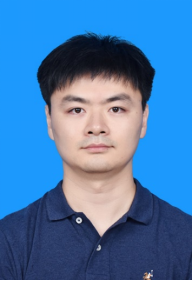孔祥臻
 |
孔祥臻 男,1987年生,副研究员,硕士生导师 电 话:025-86882177 E-mail:xzkong@niglas.ac.cn 传 真:025-57714759 | ||
研究领域及方向: 湖泊营养物循环与生态系统演化;持久性污染物多介质归趋与生态效应;湖泊生态系统模型开发与应用
简历:
|
孔祥臻:男,1987年生,江苏海安人。2010年获河海大学物理学专业学士学位;2016年、2018年分别获北京大学环境地理学专业博士学位和荷兰瓦赫宁根大学生态学博士学位;2016和2017年先后在北京大学和美国弗吉尼亚联邦大学从事博士后研究;2018年获德国“洪堡”基金,在德国亥姆霍兹环境研究中心从事博士后研究;2021年任中科院南京地理与湖泊研究所副研究员。 主要从事湖泊生态系统演化方面的研究工作,以生态系统模型为手段,结合古湖沼学方法与高频监测技术,在我国长江中下游亚热带和欧洲中部温带典型浅水湖泊开展了系列研究。构建了可定量分析浅水湖泊生态系统演化/物质循环过程及其相互作用机制的耦合模型(PCLE),提出了复杂人类活动影响下我国亚热带浅水湖泊的“三阶段演化(草型-混合藻型-蓝藻型)”新模式,揭示了气候变化影响下欧洲温带浅水湖泊藻类群落演化新模式及其“光照+温度”双因素驱动机制,深化了对不同气候区湖泊生态系统演化过程与机制的理解。在Global Change Biology、Water Research和Environmental Science & Technology等期刊发表第一/通讯作者SCI论文15篇,英文专著章节4章,申请软件著作权1项。担任Global Change Biology、Ecology Letters和Water Research等期刊审稿人。先后主持国家自然科学基金(2项)、中国博士后科学基金(2项),作为骨干参与国家自然科学基金重点项目(1项)、水专项(1项)、重点研发项目(1项)等。目前是国际湖沼协会(SIL)、全球湖泊观测网络(GLEON)和水生态系统模型网络(AEMON)成员,多次在国际和国内重要学术会议中做主题或特邀报告。
|
代表性论著:
1. Kong, X., Seewald, M., Dadi, T., Friese, K., Mi, C., Schultze, M., Rinke, K., Shatwell, T. (2021): Unravelling winter diatom blooms in temperate lakes using high frequency data and ecological modeling. Water Research, 190, 116681. 2. Fei, M.,*Kong, X.(2021): Prey preference of top omnivore manipulates the functioning and stability of multi-trophic ecosystems.Ecological Complexity, 45, 100908. (*通讯作者) 3. Kong, X., Zhan, Q., Boehrer, B., Rinke, K. (2019): High frequency data provides new insights into evaluating and modeling nitrogen retention in reservoirs.Water Research, 116, 115017. 4. Kong, X., Koelmans, A.A. (2019): Modeling decreased resilience of shallow lake ecosystems toward eutrophication due to microplastic ingestion across the food web. Environmental Science & Technology, 53, 13822-13831. 5. #Kong, X.,#Liu, W., He, W., Xu, F., Koelmans, A.A., Mooij, W.M. (2018): Multimedia fate modeling of perfluorooctanoic acid (PFOA) and perfluorooctane sulphonate (PFOS) in the shallow lake Chaohu, China.Environmental Pollution, 237, 339-347. (#共同一作) 6. Kong, X., He, Q., Yang, B., He, W., Xu, F., Janssen, A.B.G., Kuiper, J.J., van Gerven, L.P.A. Qin, N., Jiang, Y., Liu, W., Yang, C., Bai, Z., Zhang, M., Kong, F., Janse, J.H., Mooij, W.M. (2017): Hydrological regulation drives regime shifts: evidence from paleolimnology and ecosystem modelling of a large shallow Chinese lake.Global Change Biology, 23, 737-754. 7. Kong, X., He, W., Qin, N., Liu, W., Yang, B., Yang, C, Xu, F., Mooij, W.M., Koelmans, A.A. (2017): Integrated ecological and chemical food web accumulation modeling explains PAH temporal trends during regimes shifts in a shallow lake.Water Research, 119, 73-82. 8. Kong, X., He, W., Liu, W., Yang, B., Xu, F., J?rgensen, S.E., Mooij, W.M. (2016): Changes in food web structure and ecosystem functioning of a large shallow Chinese lake during 1950s, 1980s and 2000s.Ecological Modelling, 319, 31-41. 9. Kong, X., Dong, L., He, W., Wang, Q., Mooij, W.M., Xu, F. (2015): Estimation of the long-term nutrient budget and thresholds of regime shift for a large shallow lake in China.Ecological Indicators, 52, 231-244. 10. Kong, X., He, W., Qin, N., He, Q., Yang, B., Ouyang, H., Wang, Q., Yang, C., Jiang, Y., Xu, F. (2014): Modeling the multimedia fate dynamics of γ-hexachlorocyclohexane in a large Chinese lake.Ecological Indicators, 41, 65-74. 11. Kong, X., J?rgensen, S.E., He, W., Qin, N., Xu, F. (2013): Predicting the restoration effects by a structural dynamic approach in Lake Chaohu, China.Ecological Modelling, 266, 73-85. 12. Kong, X., He, W., Qin, N., He, Q., Yang, B., Ouyang, H., Wang, Q., Xu, F. (2013): Comparison of transport pathw ays and potential sources of PM10 in two cities around a large Chinese lake using the modified trajectory analysis.Atmospheric Research, 122, 284-297.

